|
|
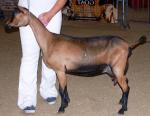
|
Oberhasli Goat
|
|
The Oberhasli is a Swiss dairy goat. This breed is of medium size, vigorous and alert in appearance. Its color is chamois. Does may be black but chamois is preferred. Chamois is described as: Bay - ranging from light to a deep red bay with the later most desirable. |
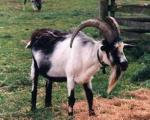
|
Peacock Goat Goat
|
|
Origin: Little is known about the origin of the Peacock Goat. The first mention of it was in the year 1887, under the name Pr�tttigau Goat. This description is for the most part identical to the present outward appearance. |
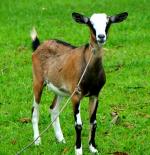
|
Philippine Goat
|
|
There are two varieties of Philippine goats raised for meat production. The coarse haired type is cream, tan or light brown and usually polled. |
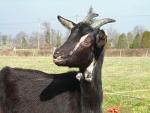
|
Poitou Goat
|
|
The Poitou is a dairy breed found in western France. |
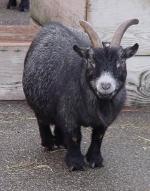
|
Pygmy Goat
|
History
The Pygmy Goat was originally called the Cameroon Dwarf Goat. The goat is mostly restricted to the West African countries. Similar forms of Pygmy goats also occur in all of northern Africa, in the south western African countries, and also in east Africa. However, what we call the Cameroon Dwarf goat is the one that we are concerned with and have in the United States. It is the breed that actually came from the former French Cameroon area. |
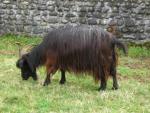
|
Pyrenean Goat
|
|
The Pyrenean goat breed is found in the French and Spanish Pyrenees and the Cantabrian mountains of Spain. |
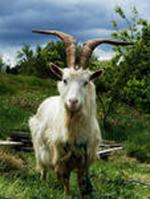
|
Russian White Goat
|
|
Dairy goats, of the Saanen and Toggenburg breeds, have been imported periodically from Switzerland and other European countries; these breed undoubtedly contributed much to the formation of various groups and varieties of goats specialized in milk production. In addition, people in both the European and Asian parts of the USSR have been raising milk goats for centuries. |
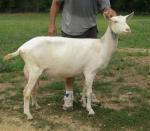
|
Saanen Goat
|
|
The Saanen dairy goat originated in Switzerland, in the Saanen Valley. Saanen does are heavy milk producers and usually yield 3-4 percent milk fat. It is medium to large in size (weighing approximately 145 lbs/65kg) with rugged bone and plenty of vigor. |
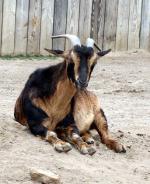
|
San Clemente Goat
|
|
San Clemente Island is located off the coast of southern California. It is owned by the U.S. government and used and managed by the U.S. Navy. Feral goats, probably of Spanish orgin, have inhabited the island for several centuries, possibly since the 1500's. Later introductions may have come from the mainland Franciscan missions during the 1600-1700's, while farmers were responsible for later introductions. |
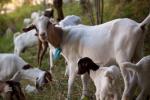
|
Somali Goat
|
|
The Somali is found in Somalia and northeast Kenya. |
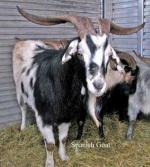
|
Spanish Goat
|
|
Goats were a common sight on early European sailing ships. They were desirable because of their relatively small size. They are agile, friendly and capable of eating a much less desirable, and more available, diet than other sources of milk and meat. |

|
Tauernsheck Goat
|
|
The Tauernsheck is a very rare breed. It's roots are in the Austrian Landrace, the Pinzgauer and an unknown ancestor that brought the white spots. Austrian farmers started breeding in the late1800s. |
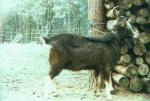
|
Thuringian Goat
|
|
Thuringian are a variety of German Improved Fawn found in Thüringen, eastern Germany. They were developed from Toggenburg, Harzerziege, Rhönziege and Thüringer Landziege around 1885. |
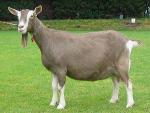
|
Toggenburg Goat
|
|
The Toggenburg is a Swiss dairy goat from Toggenburg Valley of Switzerland at Obertoggenburg. They are also credited as being the oldest known dairy goat breed. |

|
Uzbek Black Goat
|
|
Black wool goats in Uzbekistan were produced as a by-product in the formation of the new breed - Soviet Mohair goats. Mating of predominantly white first and second generation crossbred females with purebred white Angora males resulted in the appearance of 1-2% of black kids. |
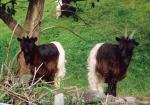
|
Valais Blackneck
|
|
A meat and dairy breed found in southwestern Switzerland, the Valais Blackneck has black forequarters and white hindquarters and long hair. |
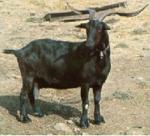
|
Verata Goat
|
|
A meat and dairy breed found in Vera, Caceres, Spain. |
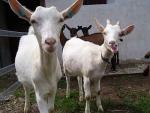
|
White shorthaired Goat
|
|
This breed originated from a landrace which was not uniform in color, mostly light-brown to white, which were improved by crossing with Swiss Saanen bucks since the early 1900s. |
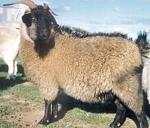
|
Zhongwei Goat
|
|
Zhongwei goats are produced only in the arid desert steppes of some counties in the Ningxia Hui Autonomous Region and Gansu Province. They live chiefly, if not solely, on salty or sandy plants or shrubs. |
|
|